
by Mark Yon
Scenes from England
Hello again.
As I mentioned last month, this issue begins yet another new era for New Worlds. With the retirement of Mike Moorcock and Charles Platt from full-time editorialship in the last issue, it is Langdon Jones that steps up to the mark as editor this time.
For that reason alone, it should be an interesting one, but last month’s issue also pointed out that the April issue was going to have an apocalyptic theme:
 The named list from last month.
The named list from last month.
With Mike Moorcock’s Jerry Cornelius saving the world from destruction, the advert proudly declared, “Is The Apocalypse Already Upon us??” Gone is the optimistic, forward-looking shiny and new future as suggested by the SF of the 1950’s, and in its place we have post-apocalyptic gloom, doom, decay and squalor. It has been an ongoing theme in the magazine for the last few years.
Is it a more realistic view of the future or just depressing? I guess reading this issue will help me decide!
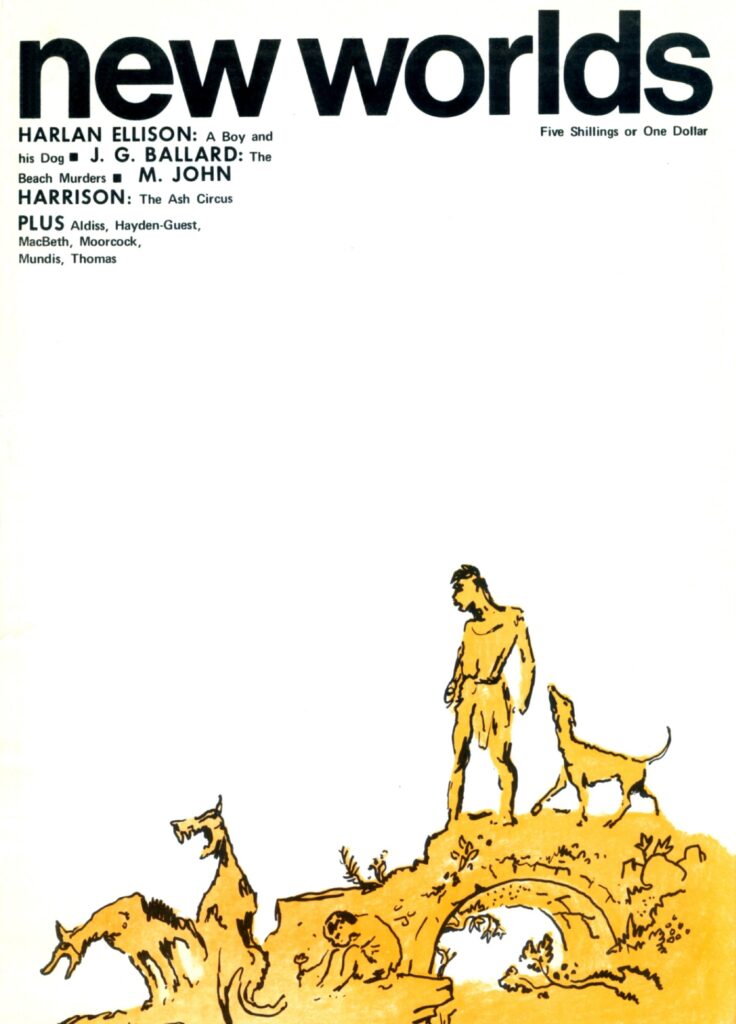 Cover by Mervyn Peake.
Cover by Mervyn Peake.
To be fair, the white cover with a minimalist approach to titling and imagery, this month by the recently deceased Mervyn Peake, does not give an impression of 'gloom and doom'. Far from it. I found it more interesting than the recent generic covers. A good start.
Lead In by The Publishers
Much is made of the fact that this issue has the UK debut of the US’s enfant terrible Harlan Ellison.
A Boy and his Dog by Harlan Ellison
 In a post-apocalyptic US we are told of teenager Vic and his telepathic dog, Blood. Vic is a teenage boy who spends his time scavenging the world for basic needs—food, companionship, and sex—as well as generally avoiding other groups, known as roverpaks, doing the same thing. They meet Quilla June – unusual because most women live where it is safer, underground. Vic rapes Quilla June before they are attacked by another roverpak. Blood is hurt in the scuffle. Quilla June escapes and returns to her underground home of Topeka.
In a post-apocalyptic US we are told of teenager Vic and his telepathic dog, Blood. Vic is a teenage boy who spends his time scavenging the world for basic needs—food, companionship, and sex—as well as generally avoiding other groups, known as roverpaks, doing the same thing. They meet Quilla June – unusual because most women live where it is safer, underground. Vic rapes Quilla June before they are attacked by another roverpak. Blood is hurt in the scuffle. Quilla June escapes and returns to her underground home of Topeka.
Determined to get food and find Quilla June, Vic leaves Blood on the surface and follows Quilla June underground, to discover that bringing Vic underground was the original plan by the subterranean city elders. New blood (see what Ellison did there?) is needed to replenish the depleted stock of men! Vic sees this as a great opportunity for sex with lots of different women, but soon tires of being basically a sex slave. He escapes back to the surface with Quilla June, only to find Blood hurt and in need of food to survive. The open ending leaves Vic with a quandary – does he leave Blood or feed Blood?
This one should activate all the seismic shockmeters: there’s sex, masturbation, rape, gore, violence, cannibalism, radioactive mutations and a distinct lack of morals and ethics as Vic and Blood try to survive. (It's a little concerning when I'm told that Ellison used his own dealings with gang culture in the US as inspiration for this story.)
As good as it is, that’s not to say that there aren't worrying elements – Quilla June’s change from rape victim to willing participant is a little jarring to me, but to some extent this reflects the brutal society Vic and Blood live in and the amoral stance that Vic has towards life. Unsurprisingly, when presented with a version of what pre-War domesticity is like, he rebels and runs away back to his previous life.
We’ve had lots of post-apocalyptic stories before—Charles Platt’s Lone Zone, for example, back in July 1965—but this novella has greater depth and more complexity and style than any of those I have read before.
Undoubtedly memorable and a million miles away from the classic hero template of older SF work, A Boy and his Dog reinvents the apocalyptic adventure story and generally holds up. I found it bold, interesting, lively and yes, controversial. As good as Delany’s Time Considered as a Helix of Semi-Precious Stones back in the December issue. 5 out of 5.
The Ash Circus by M. John Harrison

And here’s M. John Harrison’s take on Michael Moorcock’s Jerry Cornelius (more of which later.) They do say that imitation is the best form of flattery, and here Harrison copies the beginning of Ian Fleming’s James Bond movie You Only Live Twice before having Jerry return to a decaying London, then travel to Scotland and Manchester to become inspired by Byron and then get involved in a putsch in London, before meeting the authoritarian Miss Brunner again.
It’s actually not bad as a mixture of James Bond and The Avengers television series, with the dark humour of Cornelius coming to the fore, but it is less out-there than Moorcock’s own Cornelius material (again – more of which later.) This may, of course, make the story more readable than some of Jerry’s other esoteric stories. 4 out of 5.
How the Sponsors Helped Out by Anthony Haden-Guest
Poetry – or rather a list of different things sent by companies to ‘The Front’ – Hamleys sent toys, IBM sent a brain, and so on. This being New Worlds the poem doesn’t miss throwing out a few choice expletives in the mixture – guess what Playboy sent? I dare not repeat the word here. Mildly amusing. 3 out of 5.
Labyrinth by D. M. Thomas
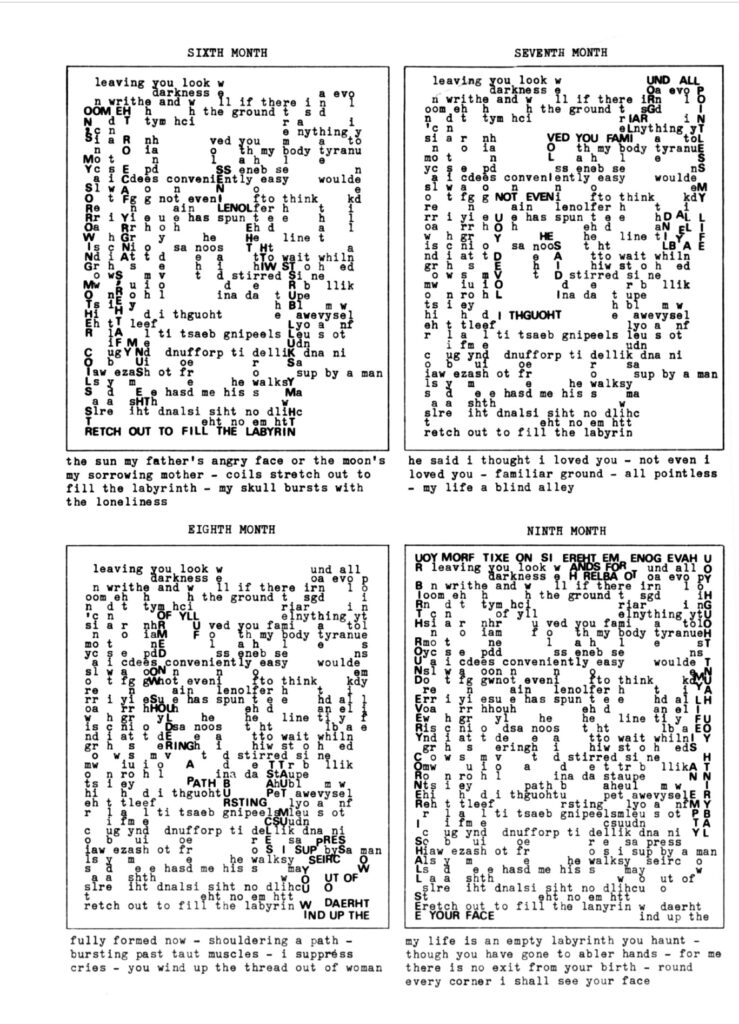 More poetry. Described as ‘a poem for light and movement’, Thomas manages to produce strange typewritten boxes that are at times undecipherable. A typical ‘form over content’ type piece. 2 out of 5.
More poetry. Described as ‘a poem for light and movement’, Thomas manages to produce strange typewritten boxes that are at times undecipherable. A typical ‘form over content’ type piece. 2 out of 5.
The Beach Murders by J. G. Ballard
Another one of Ballard’s stories where novels are compressed into paragraphs. The clever part is that each paragraph begins with the letters of the alphabet. Described as ‘An Entertainment for George MacBeth’, this one reads like the description of an exotic holiday beach party and also feels, rather oddly at times, like a James Bond plot – not the first time I’ve thought that for this issue. One of the more enjoyable of Ballard’s recent stories for me, perhaps because it feels a little more like the material Ballard was writing when I first noticed him. 4 out of 5.
Inside by J. J. Mundis
 The inevitable 'naked lady of the month' picture.
The inevitable 'naked lady of the month' picture.
Another strange story from J J Mundis after the rather odd ‘Luger’ story last month. This time, a depressing stream of consciousness story that’s all sex, drugs and allegory about being empty inside. Nothing really worth remembering. 2 out of 5.
For Czechoslovakia by George MacBeth
Yet more poetry, this time from the poet J. G. Ballard wrote for earlier. As expected, it is dark, gloomy and depressing, combining prose passages from The Diary of a German Soldier, written in 1939 interspersed with verses written by MacBeth using the process of automatic writing. I’m intrigued by the process, if less impressed by the poetry. 3 out of 5.
A Cure for Cancer (Part 2 of 4) by Michael Moorcock
 Artwork by Mal Dean.
Artwork by Mal Dean.
After Harrison’s version, we now return to the originator of the Jerry Cornelius stories.
 More artwork by Mal Dean.
More artwork by Mal Dean.
This month Jerry continues his meandering travels across time with Karen von Krupp to try and find Bishop Beezley. Lots of prose in small sections (with even an homage of J. G. Ballard in Ballard style lists of text), whose connections are rather obtuse, lots of sex and Miss Brunner – again! (see also M. John Harrison’s story.)
The plot’s undecipherable, but I feel that this is one you appreciate for the enthusiastic energy rather than the plot. Who knows what’s going on, but the writer clearly had fun writing it. 4 out of 5.
Book Reviews
A Turning World by Brian W. Aldiss
Where Aldiss muses on how perspectives change through time, throwing in a couple of reviews along the way – basically, a discussion on how others might see us in the future.
The Cannon Kings by Joyce Churchill
Referring to recent publications, Joyce Churchill (also known as M. John Harrison) writes about the importance of Germany’s armaments manufacturers in the first half of the 20th century.
A Slight Case of Tolkien by James Cawthorn
It is left to James Cawthorn to review the genre books. This month he looks at Jack Vance’s Catch A Falling Star, Robert Burnet (sic) Swann’s Moondust, Shirley Jackson’s The Sundial, Clifford Simak’s So Bright the Vision coupled with Jeff Sutton’s The Man Who Saw Tomorrow, James Blish and Norman L. Knight’s A Torrent of Faces, Ron Goulart’s ‘light-hearted’ The Sword Swallower and a well-deserved reprint of William Hope Hodgson’s horror classic, The House on the Borderland.
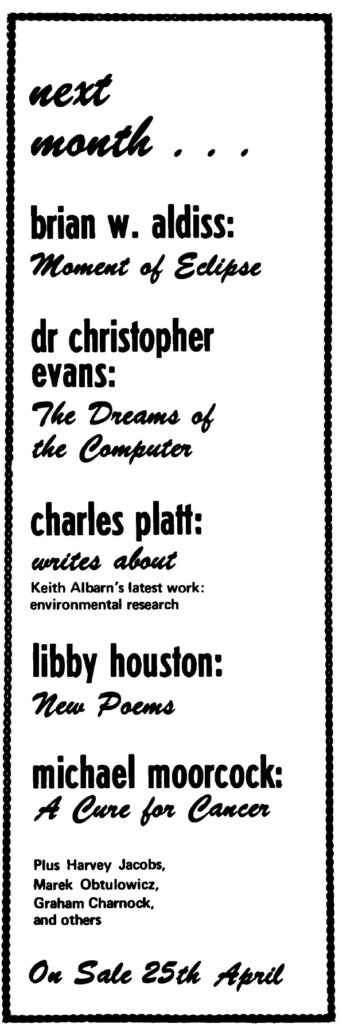
Summing Up
This one’s heavy on the espionage Bond-type vibes this month, what with not one but two Jerry Cornelius stories and a Ballard that reads like a Bond story in a Ballard style. As a first issue of the new regime with Langdon Jones as editor, it is not bad – although it may have been better had the Cornelius stories been spread out across different issues. Personally I like the stories, but they're not for everyone, and there's a lot of it here.
But then there’s the Harlan Ellison story that surpassed even my high expectations of his work. If the 'impending apocalypse' is represented by this story, then it's a memorable one to be sure, if decidedly downbeat. According to Ellison, the future is dark and tough.
I can’t see this one being published in the US in the usual science fiction magazines, but even allowing for its deliberate shock tactics, it really impressed – much more than say Bug Jack Barron, which tried to shock readers in a similar way, I think.
If I needed anything to show how much the British genre scene has changed in the last few years, this would be my example, albeit written by an American. Shocking and controversial, yes – but perhaps the best story I’ve read in New Worlds to date. A real coup for the new editorship.
Until next time!

![[March 24, 1969] Apocalypse Impending? <i>New Worlds</i>, April 1969](https://galacticjourney.org/wp-content/uploads/2024/03/New-Worlds-April-1969-672x372.jpg)

![[March 20, 1969] Going through the motions… (April 1969 <i>Fantasy and Science Fiction</i>)](https://galacticjourney.org/wp-content/uploads/2024/03/690320cover-672x372.jpg)

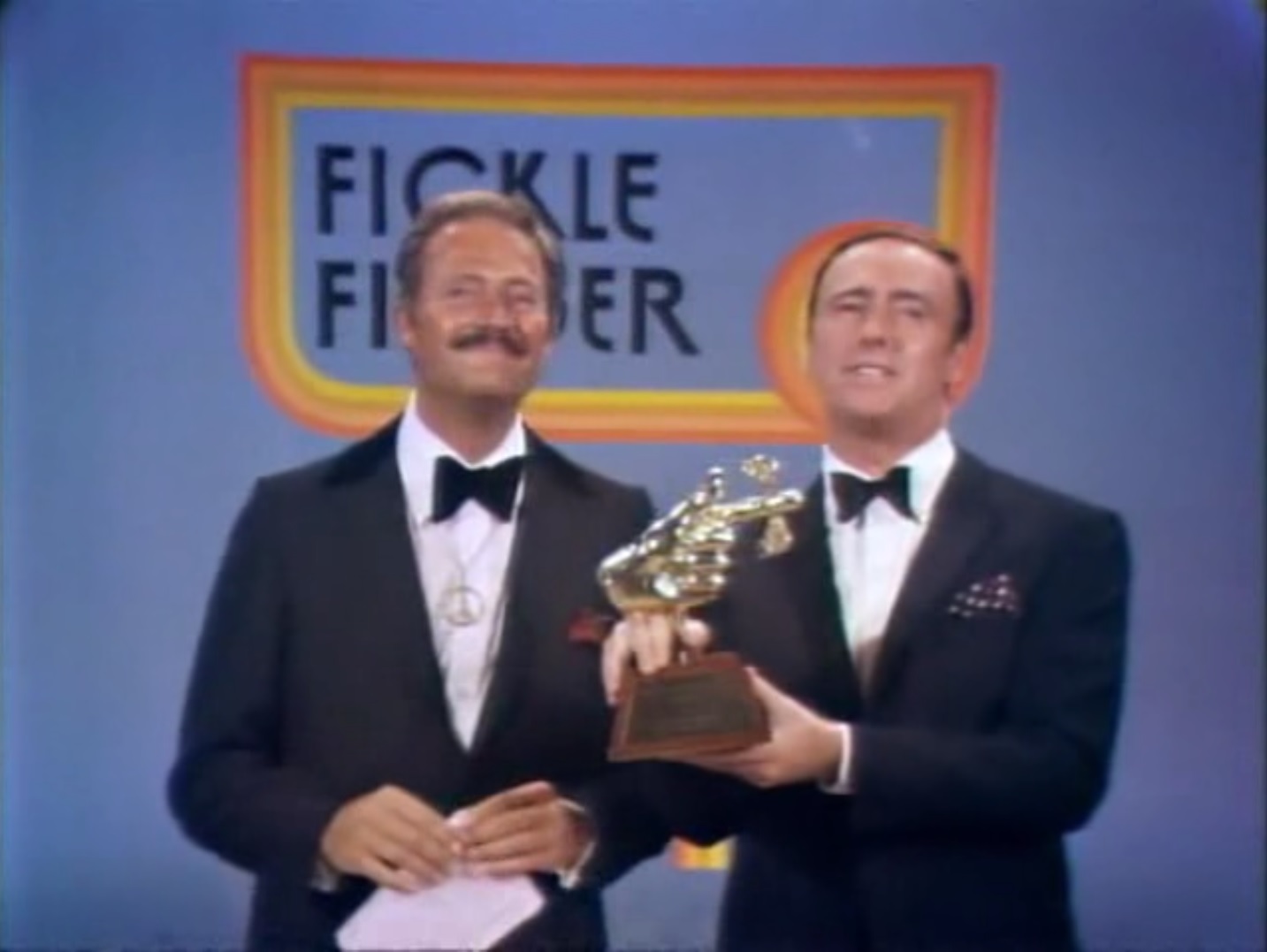



![[March 10, 1969] Speed (April 1969 <i>Fantastic</i>)](https://galacticjourney.org/wp-content/uploads/2024/03/COVERHALF-672x372.jpg)




















![[March 2, 1969] Dreams and reality (April 1969 <i>IF</i>)](https://galacticjourney.org/wp-content/uploads/2024/02/IF-1969-04-Cover-491x372.jpg)

 Ayub Khan greets LBJ in Karachi in 1967.
Ayub Khan greets LBJ in Karachi in 1967. Sheikh Mujib (center) emerges from prison.
Sheikh Mujib (center) emerges from prison. Like I said, swords and spaceships. Art by Adkins
Like I said, swords and spaceships. Art by Adkins![[March 1, 1969] Beyond this Horizon (March 1969 <i>Analog</i> and Mariner 6)](https://galacticjourney.org/wp-content/uploads/2024/02/690301cover-672x372.jpg)


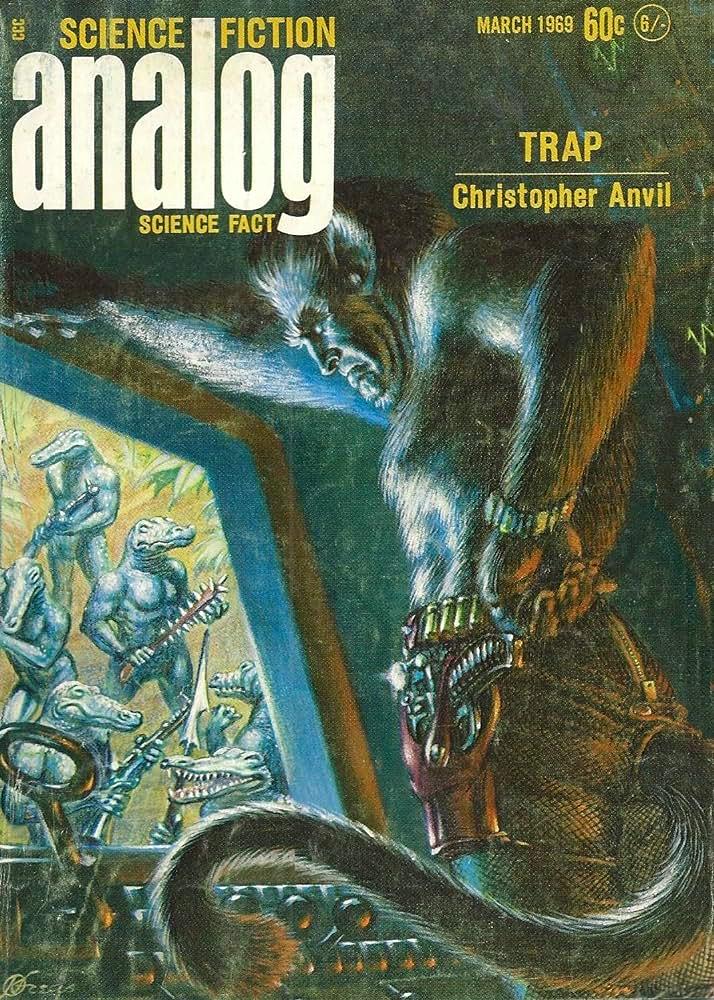

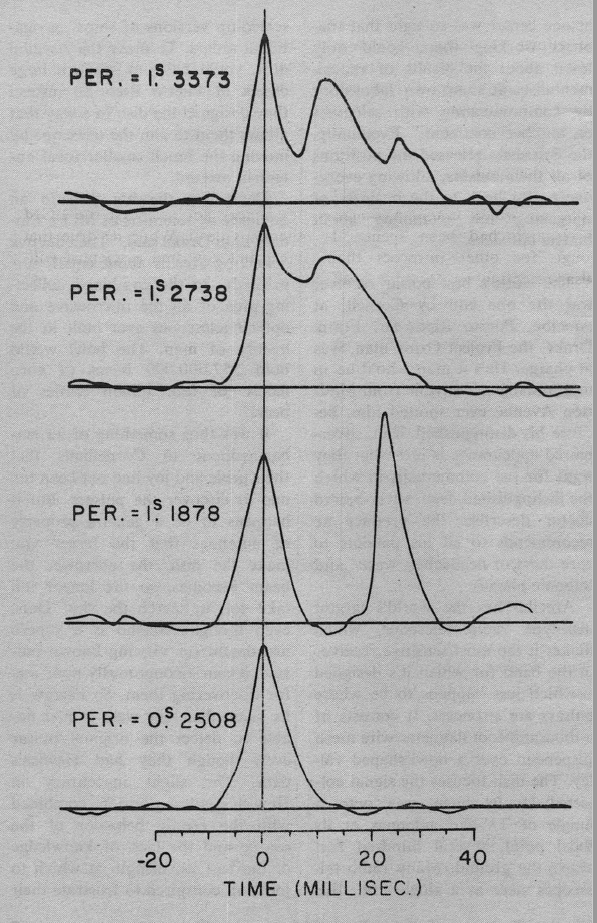
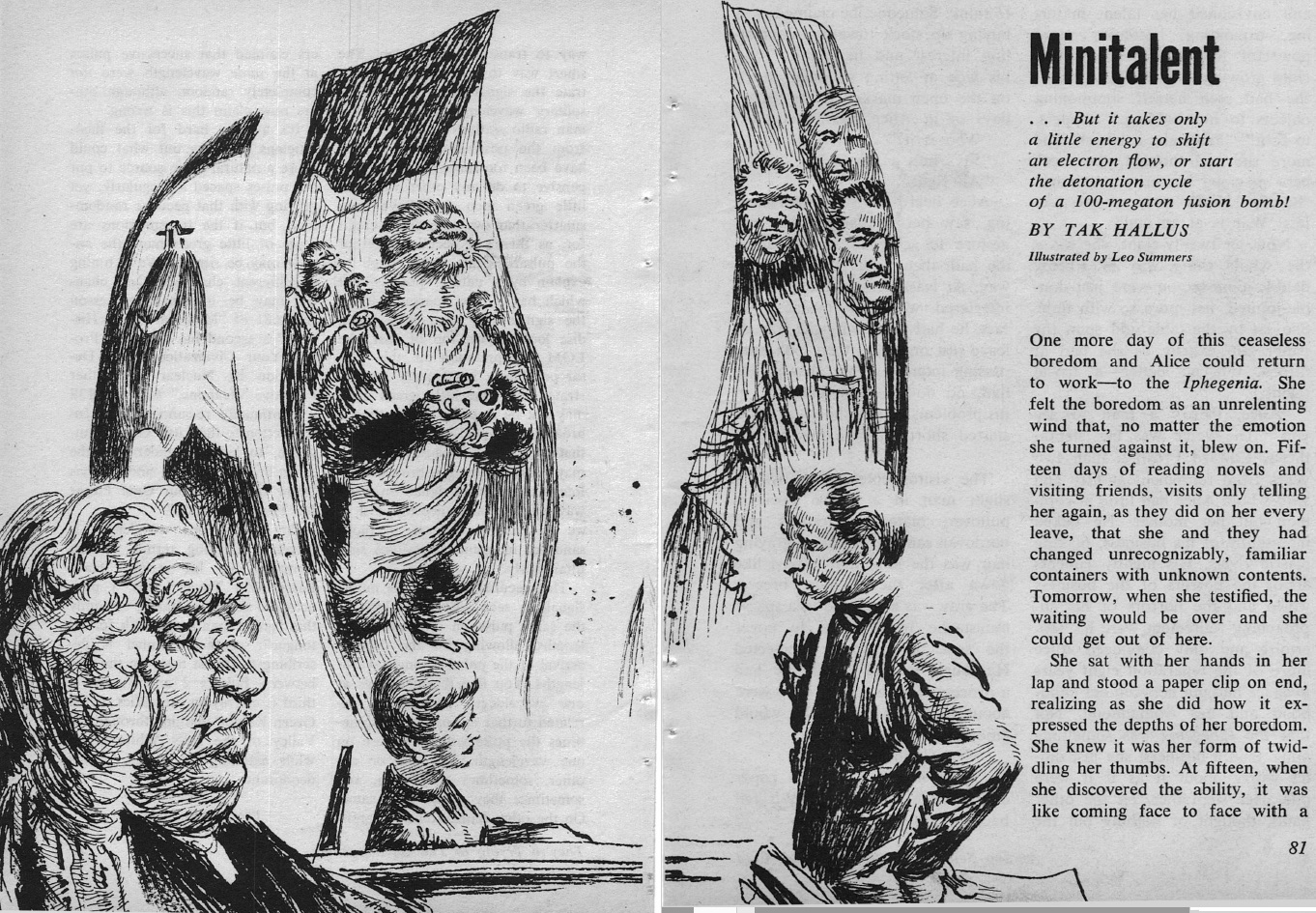
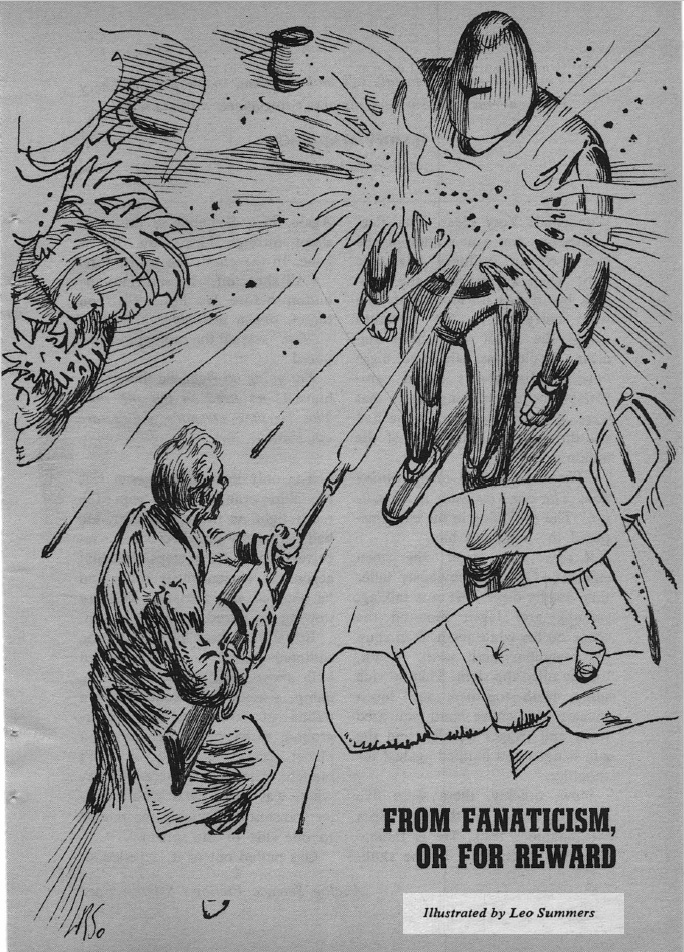


![February 26, 1969] Springtime for Moorcock? <i>New Worlds</i>, March 1969](https://galacticjourney.org/wp-content/uploads/2024/02/NW-March-1969-672x372.png)

 Cover by Gabi Nasemann. Is this Moorcock horrified by his announcement?
Cover by Gabi Nasemann. Is this Moorcock horrified by his announcement?  Artwork by Mal Dean.
Artwork by Mal Dean.
 The magazine’s obsession with D.M. Thomas continues, with something given under the premise that it is a transcript of speech from Mr. Black, a schizophrenic, as he is treated. As the story progresses, in
The magazine’s obsession with D.M. Thomas continues, with something given under the premise that it is a transcript of speech from Mr. Black, a schizophrenic, as he is treated. As the story progresses, in 
 Bizarre artwork by Mal Dean, seemingly stuck in at random in the middle of this story.
Bizarre artwork by Mal Dean, seemingly stuck in at random in the middle of this story. Artwork by Mal Dean.
Artwork by Mal Dean. Continuing the war theme, now with poetry, this time from writer and reviewer MacBeth. His last prose piece was in July 1967. The Hiroshima Dream touches on themes that seem very Ballardian, so it seems a logical piece to follow Ballard. Death, destruction, dystopia….fifty tankas* all based around apocalypse and the nuclear bomb dropping at Hiroshima. Although it is shockingly dark, I prefer MacBeth to D. M. Thomas. 4 out of 5.
Continuing the war theme, now with poetry, this time from writer and reviewer MacBeth. His last prose piece was in July 1967. The Hiroshima Dream touches on themes that seem very Ballardian, so it seems a logical piece to follow Ballard. Death, destruction, dystopia….fifty tankas* all based around apocalypse and the nuclear bomb dropping at Hiroshima. Although it is shockingly dark, I prefer MacBeth to D. M. Thomas. 4 out of 5.

![[February 22, 1969] Good and Bad Trips (March 1969 <i>Fantasy and Science Fiction</i>)](https://galacticjourney.org/wp-content/uploads/2024/02/690222cover-665x372.jpg)


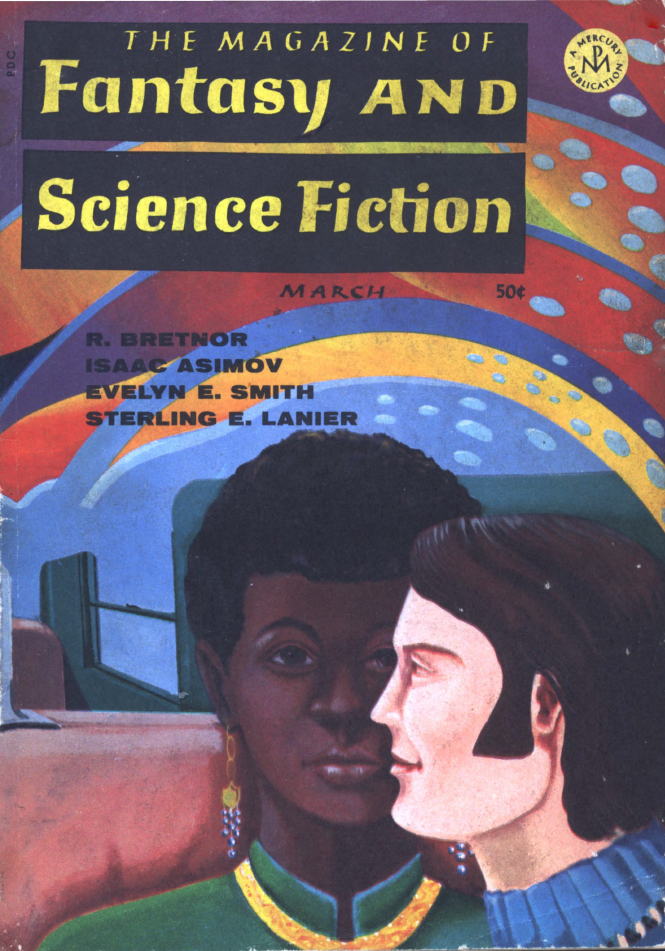
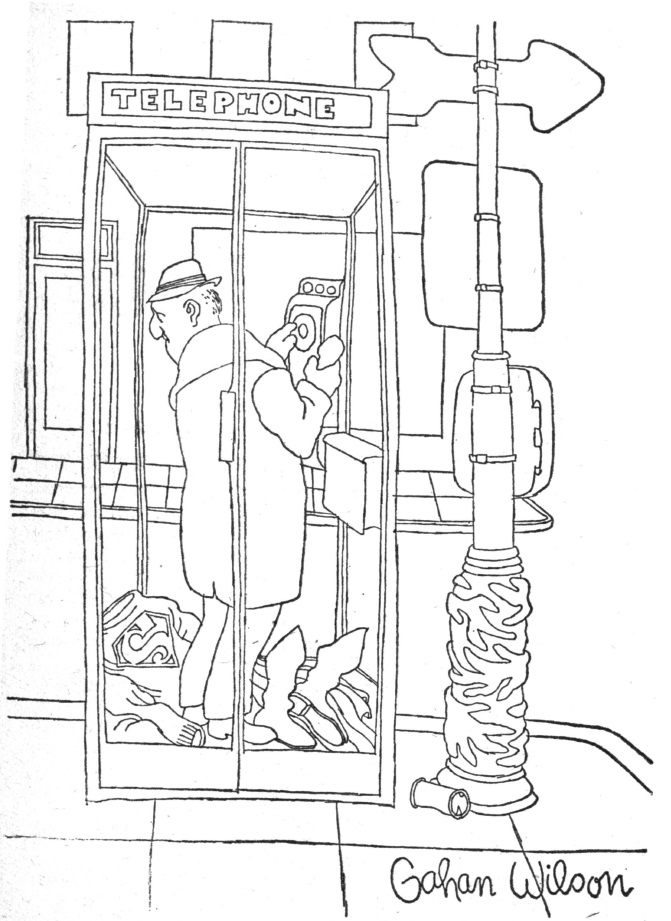
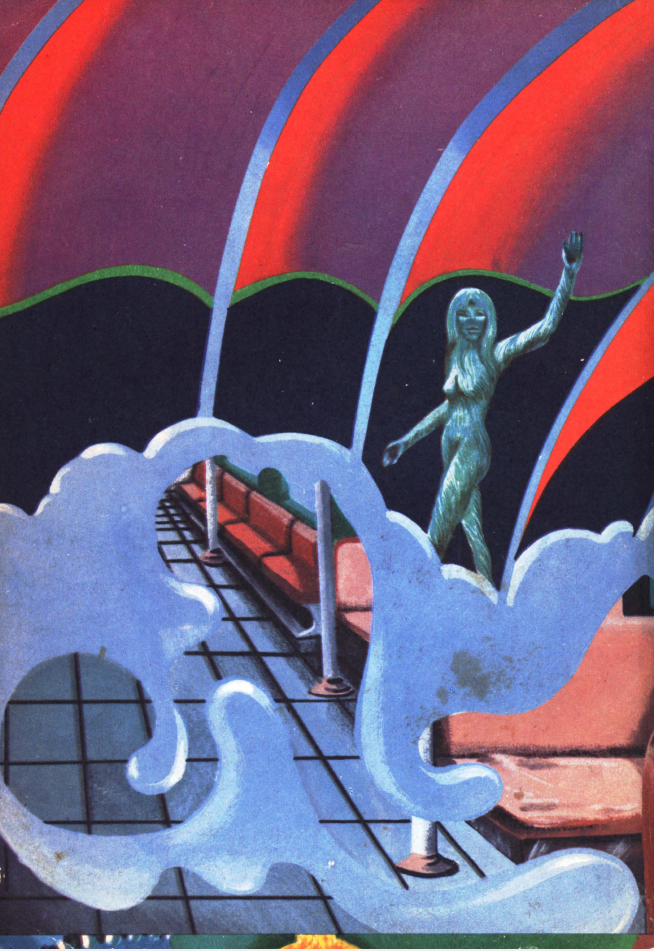
![[February 12, 1969] Slick stuff (March 1969 <i>Galaxy</i> science fiction)](https://galacticjourney.org/wp-content/uploads/2024/02/690212cover-662x372.jpg)



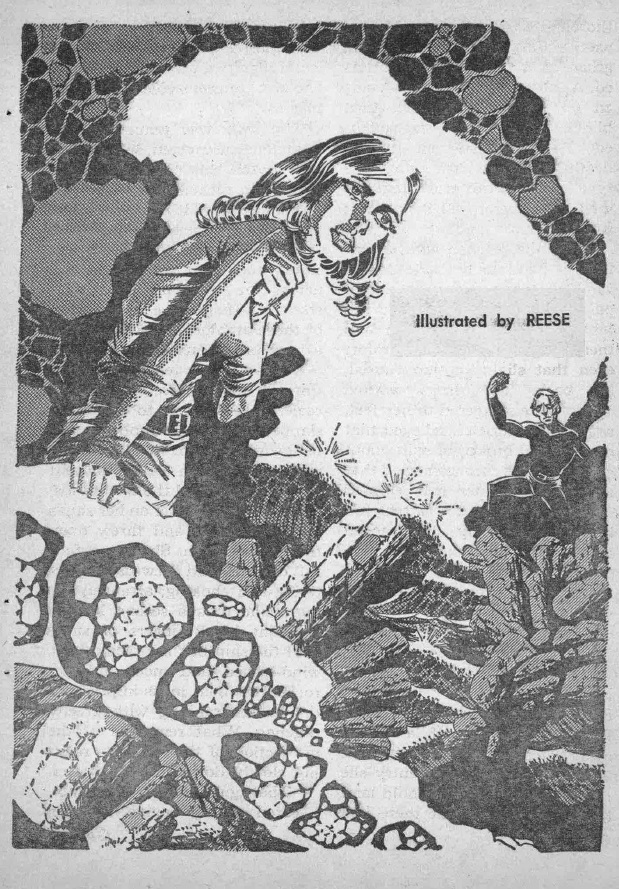



![[February 8, 1969] So Much for That (March 1969 <i>Amazing</i>)](https://galacticjourney.org/wp-content/uploads/2024/02/amz-0369-cover-492x372.png)







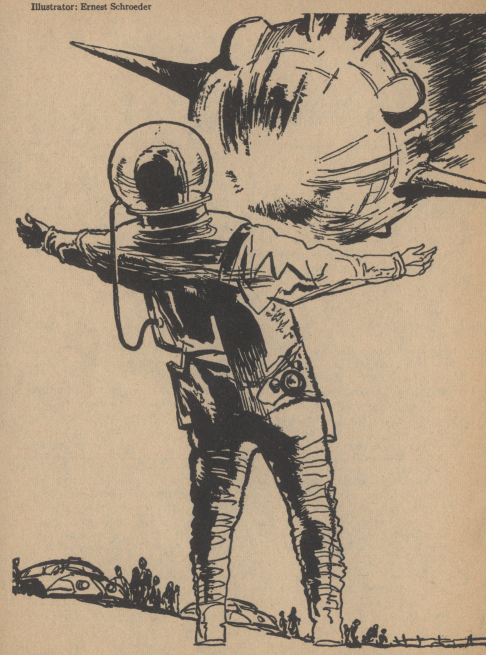
![[February 2, 1969] Winners and Losers (March 1969 <i>IF</i>)](https://galacticjourney.org/wp-content/uploads/2024/01/IF-1969-03-Cover-574x372.jpg)
 Counter-protesters armed with sticks and iron bars attack civil rights marchers while the police look on
Counter-protesters armed with sticks and iron bars attack civil rights marchers while the police look on The Steel General rides again. Art by Best Professional Artist Jack Gaughan
The Steel General rides again. Art by Best Professional Artist Jack Gaughan